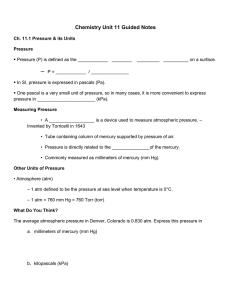Name: Gas Laws Worksheet #1 - Boyle's, Charles C
advertisement
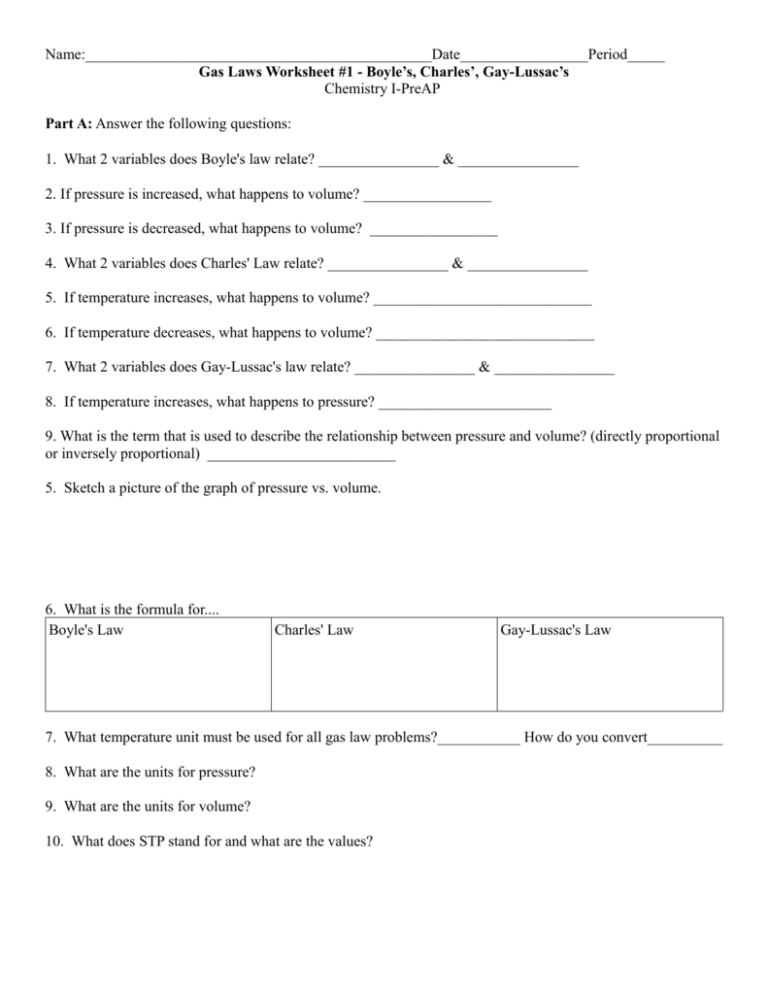
Name:______________________________________________Date_________________Period_____ Gas Laws Worksheet #1 - Boyle’s, Charles’, Gay-Lussac’s Chemistry I-PreAP Part A: Answer the following questions: 1. What 2 variables does Boyle's law relate? ________________ & ________________ 2. If pressure is increased, what happens to volume? _________________ 3. If pressure is decreased, what happens to volume? _________________ 4. What 2 variables does Charles' Law relate? ________________ & ________________ 5. If temperature increases, what happens to volume? _____________________________ 6. If temperature decreases, what happens to volume? _____________________________ 7. What 2 variables does Gay-Lussac's law relate? ________________ & ________________ 8. If temperature increases, what happens to pressure? _______________________ 9. What is the term that is used to describe the relationship between pressure and volume? (directly proportional or inversely proportional) _________________________ 5. Sketch a picture of the graph of pressure vs. volume. 6. What is the formula for.... Boyle's Law Charles' Law Gay-Lussac's Law 7. What temperature unit must be used for all gas law problems?___________ How do you convert__________ 8. What are the units for pressure? 9. What are the units for volume? 10. What does STP stand for and what are the values? Part B: Solve all problems – you must show your work (including units). Boyle’s Law 1. A gas sample contained in a cylinder equipped with a moveable piston occupied 300.0 mL at a pressure of 2.00 atm. What would be the final pressure if the volume were increased to 500.0 mL at constant temperature? 2. A balloon that contains 1.50 L of air at 1.00 atm is taken underwater to a depth at which the pressure is 3.00 atm. Calculate the new volume of the balloon. Assume that the temperature remains constant. 3. A 50.0 L sample of gas collected in the upper atmosphere at a pressure of 18.3 torr is compressed into a 150.0 mL container at the same temperature. A. What is the new pressure, in atm? B. To what volume would the original sample have had to be compressed to exert a pressure of 10.0 atm? Charles’ Law 1. Several balloons are inflated with helium to a volume of 0.75 L at 27°C. One of the balloons was found several hours later, the temperature had dropped to 22°C. What would be the volume of the balloon when found, if no helium has escaped? 2. A weather balloon is filled to the volume of 150.0 L on a day when the temperature is 10.0°C. If no gases escaped, what would be the volume of the weather balloon after it rises to an altitude where the temperature is -8.00°C? 3. A fixed quantity of gas at 23.0°C exhibits a pressure of 748 torr and occupies a volume of 10.3 L. Calculate the volume the gas will occupy if the temperature is increased to 145°C while the pressure is held constant. Gay-Lussac’s Law 1. A sample of gas occupies 10.0 L at 100.0 torr and 27.0°C. Calculate the pressure if the temperature is changed to 127°C while the volume remains constant. 2. The temperature of 200.0 mL of a gas originally at STP is changed to -25°C at constant volume. Calculate the pressure of the gas in atm. 3. A gas occupies a volume of 50.0 mL at 27°C and 630 mmHg. At what temperature, in °C, would the pressure be 101.3 kPa if the volume remains constant?

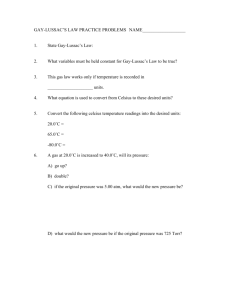
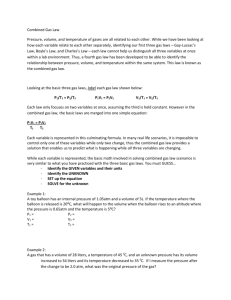
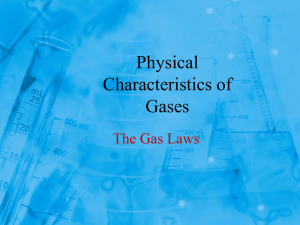

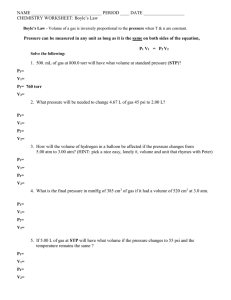
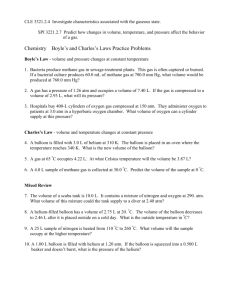
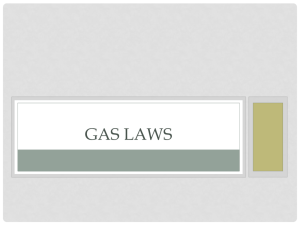
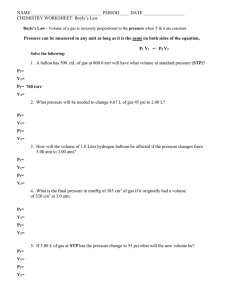
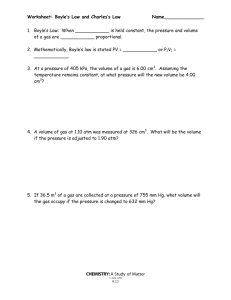


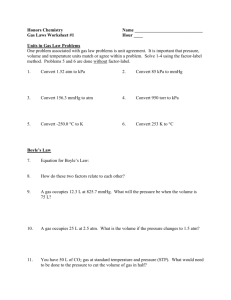
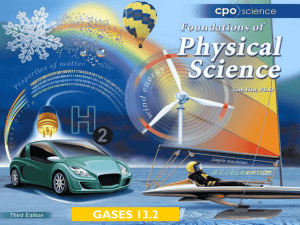
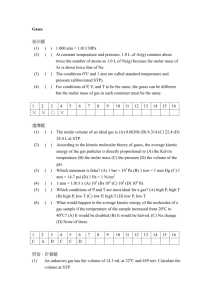

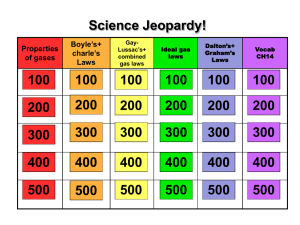
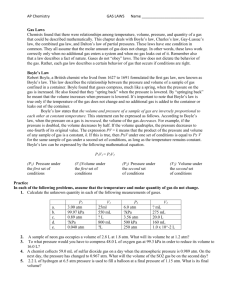
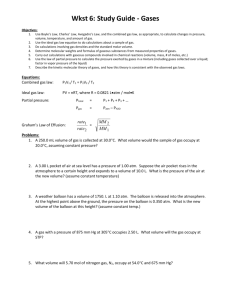

![Honors CHEM 1A HAHS MS. KNICK [Type text] [Type text] STUDY](http://s3.studylib.net/store/data/009026746_1-c4109c33208c650f8963e464bd7e0d28-300x300.png)
